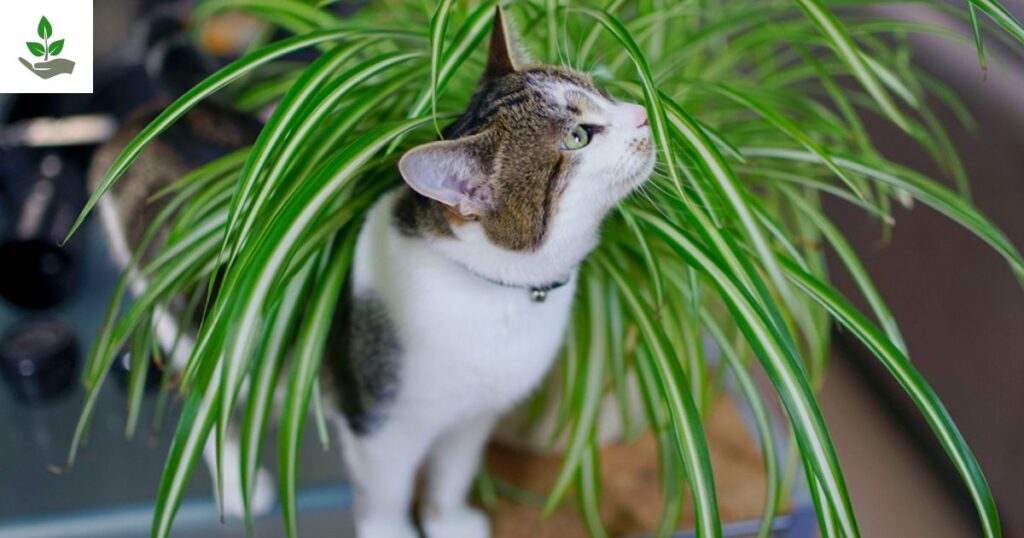Spider Plant Care, Planting, Types and Benefits
The spider plants are not only one of the easiest houseplants to care for, but they also actively purify the air in your home. This plant is a favorite among both new and experienced gardeners alike, These plants are low-maintenance houseplant that also improves air quality, look no further than the spider plant. Renowned for its adaptability and ease of care, the spider plant deserves a spot in every home.
We will cover the Spider Plant Care, including different types, planting techniques, and their numerous benefits. You are a seasoned plant enthusiast or a novice looking to green your space, these resilient plants can enhance your indoor environment and boost your well-being. By the end, you will be equipped with practical tips and insights to keep your spider plants thriving.
What Is a Spider Plant?
The Spider Plant, scientifically known as Chlorophytum Comosum, is a popular houseplant celebrated for its striking green and white striped leaves and easy-care nature. Originating from tropical and southern Africa, this resilient plant thrives in various indoor conditions, making it an excellent choice for both novice and experienced gardeners. One of its most fascinating traits is its ability to produce small plantlets that dangle from long stems, resembling spiders on a web.

These pups not only enhance the plant’s visual appeal but also offer an opportunity for propagation, allowing enthusiasts to create new plants with minimal effort. its aesthetic charm, the Spider Plant is renowned for its air-purifying qualities. Studies have shown that it effectively removes pollutants such as formaldehyde and xylene from indoor air, contributing to a healthier living environment.
Spider Plant History
The spider plant, scientifically known , boasts a rich history that dates back to its native roots in South Africa. This resilient species was initially discovered in the 18th century and quickly gained popularity due to its adaptability and ease of care. Often revered for its air-purifying properties, the spider plant became a staple in households around the globe, symbolizing both domesticity and natural beauty.
The spider plant’s journey into homes and offices can also be traced to its connection with the mid-20th century’s burgeoning interest in indoor gardening. Urbanization rose and people sought to bring nature indoors, this plant thrived not only for its aesthetic appeal but also for its remarkable ability to thrive under various conditions.
Spider Plant Overview
| Common Name | Spider Plant |
| Botanical Name | Chlorophytum Comosum |
| Family | Asparagaceae |
| Origin | Tropical and Southern Africa |
| Height | 12 to 18 inches (30 to 45 cm) |
| Fragrance | Mild, Sweet Scent |
| Toxicity | Non-toxic To Humans and Pets |
| Life Span | 5 to 10 years |
| Leaf Colours | Green with White Stripes |
What are Spider Plants Types?
- Vittatum
- Variegatum
- Bonnie
- Solid Green
- Hawaiian
Vittatum
Spider Plants Vittatum, characterized by their striking green leaves with a white center stripe, are not just visually appealing, they also bring a sense of vitality to any indoor space. This variety is among the most common and widely grown houseplants, beloved for its resilience and low maintenance requirements. The juxtaposition of the vibrant green and the crisp white creates a stunning aesthetic that can complement any decor style, from modern to traditional.
Variegatum
Spider Plants Variegatum are a delightful addition to any indoor space, showcasing striking green leaves with white edges that create a stunning visual contrast. This variegated variety exhibits a slightly more upright growth than its counterpart Vittatum, making it an excellent choice for those looking to add a touch of elegance without sacrificing floor space. The combination of its unique leaf pattern and vertical growth habit allows it to fit seamlessly into various design aesthetics, from modern minimalism to classic decor.
Bonnie
Spider Plants Bonnie, with their enchanting curly leaves adorned with a striking white center stripe, offer a refreshing twist on the classic spider plant aesthetic. Their more traditional counterparts, these compact and bushy varieties thrive in both indoor and outdoor settings, making them a versatile choice for any plant enthusiast. Their unique foliage not only adds visual interest but also creates a lively atmosphere, making them ideal for hanging baskets where they can cascade gracefully.
Read More: Peace Lily Plant Care, Planting, Types And Benefits
Solid Green
Spider Plants with solid green leaves offer a striking departure from their more commonly known variegated counterparts. These all-green varieties, devoid of any variegation, bring a lush and vibrant look that closely resembles the plant’s natural, wild form. This authenticity not only enhances their aesthetic appeal but also serves as a reminder of their resilient nature, thriving in diverse environments.
Hawaiian
Spider Plants Hawaiian variety is a captivating addition to any indoor garden, boasting glossy green leaves with golden-yellow centers that create a striking visual contrast. This unique plant is compact and decorative, making it perfect for small spaces or as a statement piece on a windowsill. Its lush foliage not only enhances the aesthetic of your home but also contributes to improved air quality, making it an ideal choice for health-conscious plant enthusiasts.
Guide About Spider Plants
Spider Plants Seeds
Spider plant seeds are small, black, and typically harvested from dried flower pods that form after the plant blooms. While many gardeners opt for the more common method of propagation through offsets, growing spider plants from seeds can be an exciting and rewarding endeavor.

This approach offer a chance to cultivate new plants, but it also allows you to witness the entire lifecycle from seed to sprout, fostering a deeper connection with your greenery.
Spider Plant Planting And Growing
Spider plants are not only visually appealing with their cascading green and white striped leaves, but they also offer a rewarding experience for both novice and seasoned gardeners. When planting spider plants, it’s essential to choose well-draining potting soil mixed with perlite or sand to encourage healthy root development.
These resilient plants thrive in indirect sunlight, making them perfect for bright living rooms or offices, where they can bask in filtered light without the risk of leaf burn. One of the most fascinating aspects of spider plants is their ability to produce pups, small offshoots that can be propagated easily. Once these pups develop roots, they can be gently removed and potted individually, allowing you to expand your collection or share with friends.
Regular watering is key, but it’s crucial to let the soil dry out between waterings to prevent root rot. these plants are known for their air-purifying qualities, making them a smart choice for improving indoor air quality while adding a touch of greenery to your space. Embracing the journey of growing spider plants can lead to a thriving indoor garden that not only beautifies your surroundings but also nurtures your well-being.
Spider Plant Care
Spider plants are not only visually appealing with their arching green leaves and cascading baby plantlets, but they also offer an array of benefits that make them a favorite among indoor gardeners. To maintain their vibrant appearance, it’s crucial to provide the right balance of light and water. While spider plants thrive in bright, indirect sunlight, they can also adapt to lower light conditions.

Be cautious too much direct sun can scorch their leaves, while too little can stunt their growth. Aim to rotate your plant occasionally, ensuring all sides receive equal exposure to light. Watering practices play a pivotal role in spider plant health. These resilient plants prefer their soil to dry out between waterings, making it essential to check the top inch of soil before adding more moisture.
Indoor Care
One of the keys to successful spider plant care is understanding their light requirements. While they thrive in bright, indirect sunlight, these adaptable plants can tolerate lower light conditions. Too much direct sunlight can scorch their leaves, so finding that sweet spot is essential. Consider rotating your spider plant every few weeks to ensure even growth and prevent it from leaning toward the light source.
Spider Plants Uses And Benefits
- Spider plants are known to remove toxins like formaldehyde, carbon monoxide, and xylene from the air.
- Having greenery indoors can improve mental well-being, reduce stress, and enhance productivity.
- With their long, arching leaves and hanging baby plants, spider plants make beautiful hanging or shelf plants.
- Produces many baby plantlets that can be rooted and shared—perfect for gifts or expanding your plant collection.
Spider Plants Tips And Fun Fact
- Too much direct sun can scorch the leaves bright, indirect light is perfect.
- Overwatering is a common issue, Water when the top inch of soil feels dry.
- Not toxic, but spider plants contain compounds that can mildly stimulate cats, like catnip.

- Spider plants can remove harmful indoor air pollutants like formaldehyde and xylene.
- The plantlets look like little spiders hanging from a web hence the name spider plant.
Read More: Mountain Ash Tree Care, Planting, Types And Benefits.
Conclusion
Spider plants are not only aesthetically pleasing but also incredibly beneficial for indoor air quality and overall well-being. By understanding the Spider Plant Care requirements, such as optimal light conditions and watering practices, you can ensure that your spider plant thrives in your home.
Exploring the various types of spider plants available can help you choose the perfect variety to suit your space and style. Remember to take advantage of their natural ability to propagate and fill your home with lush greenery. Start your journey into spider plant care today and enjoy the numerous advantages they bring to your living environment.
FAQs
How to propagate spider plants?
To propagate a spider plant, snip off a healthy baby plantlet from the mother plant. Place it in water or moist soil until roots develop 1–2 weeks. Once rooted, transplant it into a pot with well-draining soil.
Is spider plant toxic to cats?
Spider plants are not toxic to cats, but they can cause mild stomach upset if your cat chews on them a lot, and some cats may be attracted to their mildly hallucinogenic compounds.
Why does my spider plant have brown tips?
Brown tips on spider plant leaves are usually caused by low humidity, fluoride or chlorine in tap water, or over-fertilization. Try using filtered or distilled water and avoid overfeeding.
How to plant spider plant babies?
To plant spider plant babies, snip off a healthy spiderette with small roots, Place it in moist potting soil and keep it slightly damp until established, Keep the pot in bright, indirect light and watch it grow.







